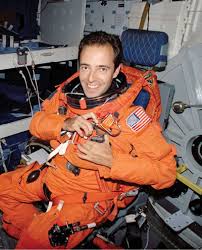When we think about space exploration, what usually comes to mind are rockets blasting off, astronauts floating in zero gravity, and missions to distant planets. But the incredible innovations developed for space travel haven’t just stayed in the stars—they’ve made their way into our everyday lives in surprising ways.
In fact, many products we use daily were either invented or improved thanks to technology originally designed for space missions. These innovations show how the high-tech challenges of exploring the cosmos ripple down to improve life here on Earth.
Let’s explore five amazing everyday products you probably use or know about that have roots in space technology.
1. Memory Foam: Comfort Inspired by Space
If you’ve ever slept on a memory foam mattress or used a memory foam pillow, you’re enjoying technology that originated with NASA. Back in the 1960s, NASA wanted a material to improve the safety of aircraft cushions and astronaut seats during takeoff and landing. They needed something that could absorb shock and conform perfectly to the body’s shape.
Enter memory foam—a polyurethane material that molds to pressure and heat, providing exceptional support and comfort. While originally designed to protect astronauts from the intense forces of spaceflight, memory foam soon found a much broader application.

Today, memory foam is everywhere: mattresses, pillows, seat cushions, even running shoes. Its ability to reduce pressure points makes it a favorite for those seeking a better night’s sleep or extra comfort during long flights or drives.
Fun fact: Without space exploration, your cozy memory foam mattress might not exist!
2. Water Purification Systems: Clean Water From Space to Home
Keeping astronauts healthy during months in space requires absolutely clean water. NASA engineers developed advanced water purification and recycling systems that remove bacteria, viruses, and other contaminants in zero gravity conditions.
This technology has since been adapted for use on Earth, especially in places where access to clean water is limited. Portable water purifiers and filtration systems now use principles from NASA’s tech to deliver safe drinking water to remote areas, disaster zones, and even hikers and campers.
Some of the water filters used in outdoor gear today are based on NASA’s original designs, making survival and adventure safer for millions.
Why it matters: What started as a space-age solution helps millions of people access clean water daily.
3. Scratch-Resistant Lenses: Clear Vision Thanks to Space Tech
Have you ever wondered why your eyeglasses or sunglasses don’t get scratched as easily as they might have decades ago? The answer involves a space-born invention.
NASA needed durable, clear materials to protect astronauts’ helmet visors from space debris and harsh radiation. Scientists developed a special coating that made lenses resistant to scratches and wear—something critical in the unforgiving environment of space.
This technology made its way into consumer products, revolutionizing eyewear. Today’s scratch-resistant lenses use coatings that trace back to NASA’s innovations, making glasses last longer and maintain clearer vision.
This coating is also found on smartphone screens, camera lenses, and even car windshields, proving the broad impact of space research.
4. Freeze-Dried Food: Space Meals That Changed Convenience Food
Long space missions require food that’s lightweight, nutritious, and has a long shelf life. NASA pioneered freeze-drying technology to meet this need—removing moisture from food without damaging flavor or nutrients, so it could be rehydrated easily in space.
Freeze-dried foods were once considered just for astronauts, but now they’re common in our kitchens and backpacks. From instant coffee to backpacking meals, freeze-dried food offers convenience without sacrificing taste.
During emergencies or outdoor adventures, freeze-dried foods provide a reliable source of nutrition, all thanks to space technology.
Imagine: That quick bowl of freeze-dried soup or fruit snack might have been inspired by space mission meals!
5. Infrared Ear Thermometers: Medical Tech from Space
Monitoring astronaut health is critical during missions. NASA developed infrared sensors that detect heat without contact, which became the basis for infrared ear thermometers. These devices quickly and accurately measure body temperature by sensing infrared radiation from the eardrum.
Today, infrared ear thermometers are a staple in homes, clinics, and hospitals worldwide. They offer a fast, hygienic way to check fevers, especially useful for children and during flu seasons.
This non-invasive method improves patient comfort and speeds up diagnosis, all thanks to technology born from space exploration needs.
Why Space Technology Matters to Everyday Life
These five products are just the tip of the iceberg. Space technology has also influenced cordless power tools, GPS navigation, athletic wear, firefighting gear, and even better insulation materials.
The investment in space exploration doesn’t just help us understand the universe—it drives innovation that touches every part of our daily routines. When engineers tackle the extreme conditions of space, they create solutions that often have unexpected, life-changing uses back on Earth.
How Space Technology Innovations Reach You
You might wonder how these futuristic inventions make their way from NASA’s labs to your local store. It often happens through a process called technology transfer, where government agencies license their inventions to private companies for commercial use.
Sometimes, companies collaborate directly with NASA or other space agencies to develop new products based on space tech. Other times, engineers repurpose space-age materials for new applications—like turning astronaut helmet coatings into scratch-resistant lenses.
This ongoing cycle ensures that investments in space exploration continue to pay dividends in everyday technology, healthcare, and safety.
Looking Ahead: What’s Next from Space?
As space missions grow more ambitious—think Mars colonization, lunar bases, and asteroid mining—the technologies developed will only get more advanced.
Future breakthroughs might include:
- Advanced robotics: Helping with surgery or disaster response.
- Improved energy storage: Leading to longer-lasting batteries.
- Smart materials: That adapt to temperature or repair themselves.
Each new challenge in space exploration pushes humanity to invent better tools that often find their way back to improve life on Earth.
Final Thoughts
The next time you flop onto your memory foam mattress, drink filtered water, or check your temperature with a quick ear scan, remember—you’re benefiting from the ingenuity of space technology.
These everyday products show that the dream of exploring beyond our planet does more than satisfy curiosity—it creates practical solutions that make life better here and now.
So whether you’re a space enthusiast or just someone enjoying a good night’s sleep, take a moment to appreciate the cosmic journey behind the products in your home.
Who knew the future of space could be so comfortably close?





